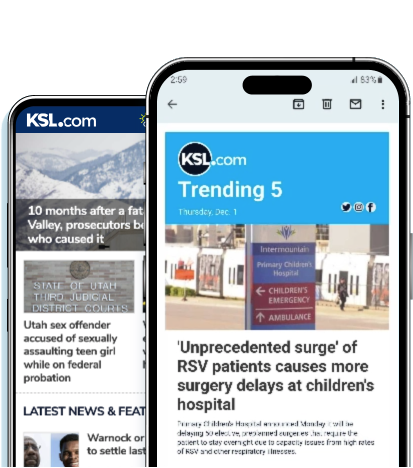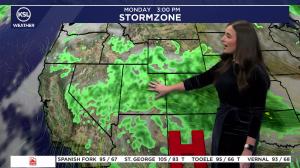- Active shooter hoaxes at universities caused panic at Villanova and Chattanooga.
- Students hid and texted loved ones as police responded to false reports.
- Law enforcement must investigate all calls as each second is critical, experts say.
VILLANOVA, Penn. — A terrifying text message sent students running for cover, barricading themselves in bathrooms and knocking over chairs in the frantic rush to hide from the active shooter reported on their university campus.
Then, a few hours later and 700 miles away, it happened again.
Reports of active shooters wielding assault rifles on campus sent excited students preparing for a new school year at Villanova University in Pennsylvania and the University of Tennessee at Chattanooga into lockdown as law enforcement officers surged to the schools to assess the threats. Students hid behind walls, locked themselves into dorm rooms and frantically texted loved ones.
At both schools, the reports turned out to be false: There were no gunmen found, no shots fired. They're part of an apparent wave of fake reports that have struck university campuses across the country, stirring fear and disruption from Pennsylvania to Arizona.
A Villanova senior, Ava Petrosky, was singing at an orientation Mass at the Catholic university when she saw people in the crowd begin to run.
"Honestly, at that moment I thought, 'I'm gonna die,'" she told CNN affiliate WPVI. She joined the crowd and ran for cover.
At Chattanooga, which was in the midst of Welcome Week festivities, students sprinted from a classroom in seconds after receiving a text message urging them to "Run. Hide. Fight." Police officers with assault-style rifles directed them to run across the street, senior Luke Robbins told the Chattanooga Times Free Press.
"It was just hectic," Robbins said. "It's crazy."
At least one more active shooter report was received at Villanova on Sunday, along with one at the University of South Carolina. Six universities had active shooter reports Monday; all of them turned out to be unfounded.
The false calls emerge from an atmosphere where the threat of mass gun violence is horribly real. Less than a month ago, a gunman attacked the US Centers for Disease Control and Prevention headquarters in Atlanta, triggering a lockdown at nearby Emory University. Another gunman, targeting the NFL's New York headquarters, opened fire inside a Manhattan skyscraper in late July and killed four people, including an off-duty police officer.
Swatting – the deliberate practice of making a false report to police, summoning law enforcement who believe a mass shooting, hostage situation or bombing may be taking place – has been documented by the FBI for at least two decades.
And calls targeting schools aren't unique. One researcher who tracked swatting calls at schools and universities documented 731 calls in the United States during 2023. In the 2022-2023 school year, there were more than 446 false reports of active shooters at schools, according to a report from the Educator's School Safety Network, a non-profit dedicated to school safety.
The hoax was a "really tough way to start freshman year at college," said Courtenay Harris Bond, who was at Villanova's campus with her freshman son Thursday when the active shooter alert went out, according to WPVI.
A terrifying call
The Villanova and Chattanooga incidents on Aug. 21 started with every university's nightmare: a call reporting an active shooter on campus.
In both cases, dispatchers heard what sounded like gunshots in the background of the calls – lending a disturbing realism to what turned out to be fake reports.
First, the 911 dispatch in Hamilton County, Tennessee, which encompasses the Chattanooga campus, received a call around 12:30 p.m. saying a White male with an AR-15-style rifle had shot four people near the school library, Chief Sean O'Brien of the University of Tennessee at Chattanooga Police said Friday.
A few hours later, around 4:33 p.m., a similar call came in at the Department of Emergency Services in Delaware County, Pennsylvania, reporting shots fired from a man "armed with an AR-15-style weapon" on Villanova's campus, according to a news release from Delaware County Communications and Public Affairs. Multiple similar calls followed. The incident fell on the first day of new student orientation.
Many swatting calls seem to follow a script, according to Keven Hendricks, a law enforcement veteran who teaches a class about swatting at the National White Collar Crime Center. Hoax callers may also call non-emergency numbers instead of emergency numbers – since the Voice over Internet Protocol services used by many swatters typically can't access local 911 networks, Hendricks said.
'Every second matters'
But even if there are red flags that indicate a call may be false, law enforcement doesn't typically have the time to investigate before responding because "every second matters" when an act of mass violence may be occurring, according to Elizabeth Jaffe, an associate professor at Atlanta's John Marshall Law School.
"Law enforcement doesn't have a choice," Jaffe said. "They have to investigate. They can't just sit around and wait."
During the Chattanooga and Villanova incidents, law enforcement — with no way to know the calls weren't real — rushed resources to the university campuses.
In Tennessee, dispatchers summoned all available officers from the university's police department, according to a news release from the school. In all, more than 100 officers were on scene, Chattanooga Police Department Chief John Chambers told CNN.
"The response is always gonna be a legitimate response, especially early on," Chambers said. "We are what stands between life and death, and our men and women in law enforcement are going to rush in and hold that line as quickly as possible."
Still, the flooding of officers to a fake call can draw resources away from real problems, according to John DeCarlo, the former police chief of Branford, Connecticut, and a professor of criminology at the University of New Haven.








